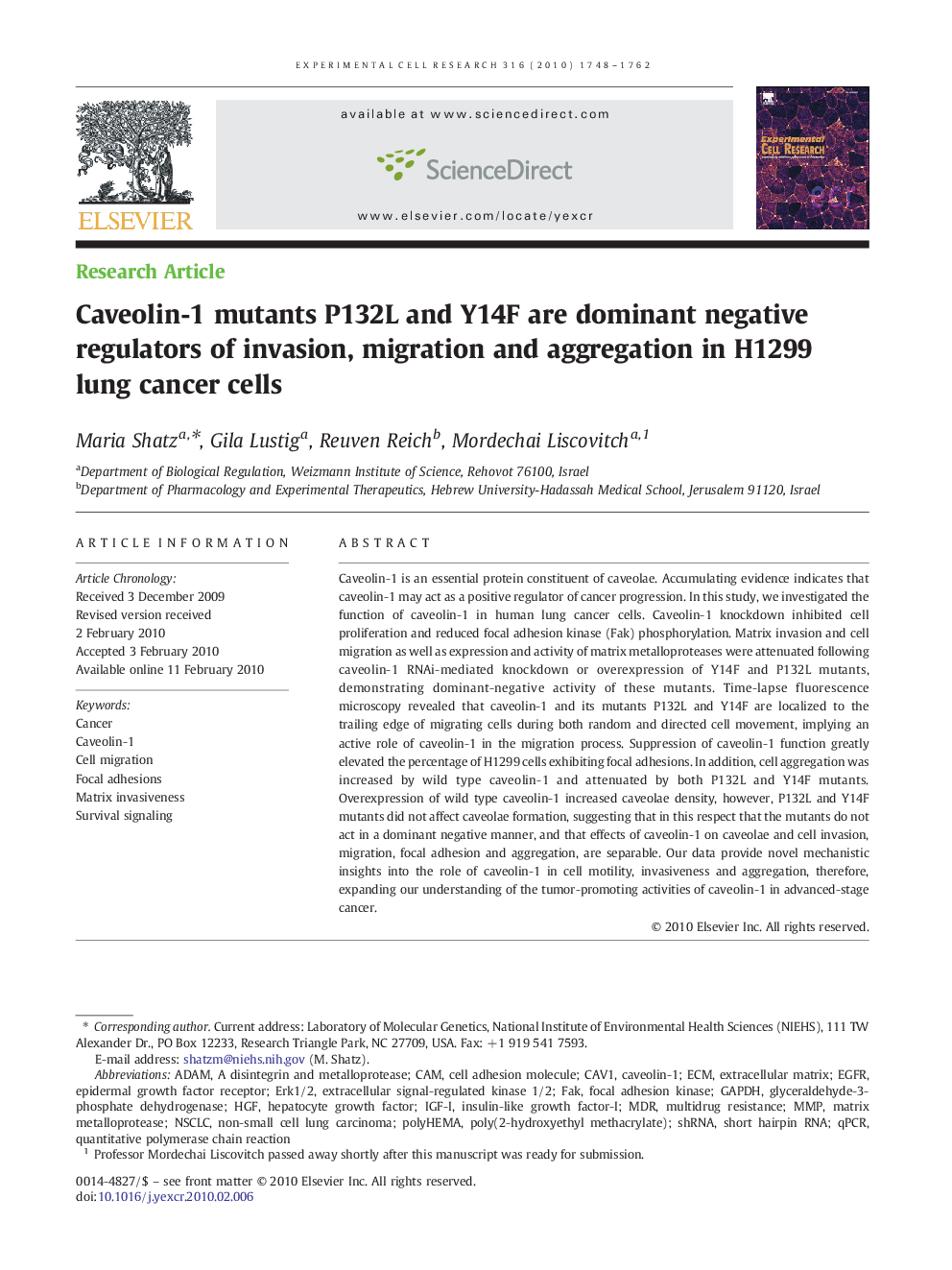| Article ID | Journal | Published Year | Pages | File Type |
|---|---|---|---|---|
| 2130994 | Experimental Cell Research | 2010 | 15 Pages |
Caveolin-1 is an essential protein constituent of caveolae. Accumulating evidence indicates that caveolin-1 may act as a positive regulator of cancer progression. In this study, we investigated the function of caveolin-1 in human lung cancer cells. Caveolin-1 knockdown inhibited cell proliferation and reduced focal adhesion kinase (Fak) phosphorylation. Matrix invasion and cell migration as well as expression and activity of matrix metalloproteases were attenuated following caveolin-1 RNAi-mediated knockdown or overexpression of Y14F and P132L mutants, demonstrating dominant-negative activity of these mutants. Time-lapse fluorescence microscopy revealed that caveolin-1 and its mutants P132L and Y14F are localized to the trailing edge of migrating cells during both random and directed cell movement, implying an active role of caveolin-1 in the migration process. Suppression of caveolin-1 function greatly elevated the percentage of H1299 cells exhibiting focal adhesions. In addition, cell aggregation was increased by wild type caveolin-1 and attenuated by both P132L and Y14F mutants. Overexpression of wild type caveolin-1 increased caveolae density, however, P132L and Y14F mutants did not affect caveolae formation, suggesting that in this respect that the mutants do not act in a dominant negative manner, and that effects of caveolin-1 on caveolae and cell invasion, migration, focal adhesion and aggregation, are separable. Our data provide novel mechanistic insights into the role of caveolin-1 in cell motility, invasiveness and aggregation, therefore, expanding our understanding of the tumor-promoting activities of caveolin-1 in advanced-stage cancer.
